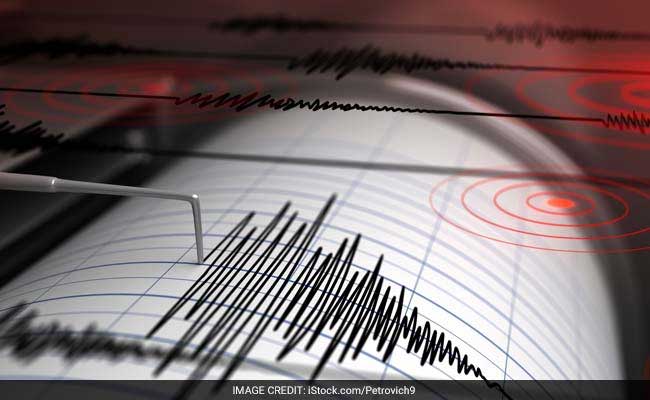As French President Emmanuel Macron’s visit to India as the Republic Day guest of honor came to an end, discussions on cooperation in defence, space and civil nuclear aspects emerged as the highlight of the meetings. Of these, discussions on small modular reactors (SMRs) have proven to be of particular interest as India pivots its civil nuclear energy strategy towards SMRs. This comes as Prime Minister Narendra Modi is committed to reducing the country’s dependence on coal for power generation.
Specifically, the two leaders discussed the Jaitapur nuclear power project, which has been facing delays since 2018. He also appreciated the proposal of French state-owned power utility Electricite de France (EDF) to train Indian nuclear engineers and technicians for deployment in projects. European pressurized reactor.
India is working on a strategy to spread small nuclear power plants across the country. With the goal of rapidly increasing its reliance on nuclear power over the next decade, India aims to address both decarbonization and increasing demand for electricity. Currently, nuclear plants contribute less than 2% of India’s annual electricity generation.
France is a leading power in civil nuclear energy. France relies on nuclear reactors to produce 65% to 70% of its electricity, representing the highest proportion of nuclear generation worldwide. This historical reliance on nuclear power has allowed France to export excess clean energy to neighboring countries during times of rising demand.
leaning toward nuclear
As the world’s most populous country with over 1.4 billion people, India’s energy demands are growing at a rapid pace. Also, global awareness about climate change has put the world on a mission to drastically reduce carbon emissions. India has heeded this call and aims to reach net zero emissions by 2070 and meet 50% of its electricity requirements from renewable energy sources by 2030.
For this purpose, India has taken several steps to harness the country’s renewable energy resources and developed various projects and mega projects, thereby contributing more to solar, wind and hydropower for India’s power needs.
Since fossil fuels are the source of 56% of India’s electricity and renewable energy such as solar, wind and hydro power account for about 40%, nuclear energy accounts for less than 2%. Contrast this with France, where 65-70% of its energy comes from nuclear power, which helped that country avoid a major energy crisis in the wake of the Russia-Ukraine war.
India is yet to expand nuclear power, which is one of the most reliable sources that can generate electricity regardless of weather conditions. In the past, factors such as security fears, huge construction costs, limited uranium reserves in the country and restrictions on nuclear fuel acquisition had restrained the growth of India’s civil nuclear programme.
However, India is well positioned not only to make significant investments and implement advanced and reliable cutting-edge technologies, but also to acquire nuclear fuel independently since 2008, when the NSG, of which India is not a member, Removed nuclear trade restrictions. Imposed against India in 1974. India’s civil nuclear program is set to move forward if disputes over cost-effectiveness and liability issues are addressed.
India’s civil nuclear program has significant potential. The country may have limited uranium reserves, but it has the largest reserves of thorium in the world – an element that can be converted into uranium and used in reactors.
At this point, as the world ignores thorium as an alternative to uranium, India alone is developing technologies to build thorium-based nuclear reactors, which in the long run will prove to be a long-term game-changer for India.
India-France nuclear cooperation
India and France share a solid history of nuclear cooperation, which began with the signing of the India-France Civil Nuclear Agreement in 2008, which was significant as it ended India’s isolation from the international nuclear market after nearly three decades and ended access to nuclear technology from France. , a leading nuclear power.
The agreement committed France to provide nuclear fuel, reactors and related equipment to India for civilian purposes. It also opened the door for French companies to participate in India’s civil nuclear efforts.
In 2018, under the leadership of PM Modi and President Macron, the two countries signed an agreement on the development of six nuclear reactors at Jaitapur in Ratnagiri district of Maharashtra. If constructed, the Jaitapur nuclear facility will hold the title of the world’s largest nuclear power generation facility in terms of net generation capacity, reaching 9,900 MW. However, due to differences in liability laws in both countries and other issues, the project has been delayed.
In Macron’s visit this month, the two sides discussed progress on the financing mechanism and the localization component of the project.
Small Modular Reactors: A Game Changer?
In light of this, India is leaning towards the possibility of developing small modular reactors or SMRs. SMRs represent an emerging technology of advanced nuclear reactors with capacities up to 300 megawatts (E) per unit, approximately one third of conventional reactors. Capable of producing substantial low-carbon electricity, they are characterized by their small physical size, modular design for factory assembly and transportation, and the use of nuclear fission to generate heat for energy production.
SMRs are localised, cost-effective and remove the risk of catastrophic accidents as they are meant to provide power in scenarios where large-scale facilities are unnecessary or locations lack the infrastructure to accommodate large units, Such examples include small electricity markets, isolated areas, modest grids, sites with restricted water and land availability, or specific industrial applications.
Limited grid coverage and the high cost of rural electrification present challenges in expanding energy access. To address this, small modular reactors (SMRs) with their small power output can be integrated into existing grids or deployed off-grid in areas lacking adequate transmission infrastructure. It provides low-carbon power solutions for industry and local populations, ensuring that a single power plant does not exceed 10% of the total installed grid capacity.
Due to their compact size, simplicity and advanced technology, small modular reactors (SMRs) offer better safety and lower fuel demands. SMR-based power plants may require less frequent refueling, typically every three to seven years, as opposed to the typical one to two years for conventional plants. Some SMRs are designed to operate for extended periods, up to 30 years, without the need for refueling.
More than 80 commercial small modular reactor (SMR) designs are currently in development worldwide. Despite the nascent nature of the concept, the global community is making progress with SMR. Projects are either under construction or in the licensing phase in various countries, including Argentina, Canada, China, Russia, South Korea, and the United States, demonstrating the international momentum behind the development of small modular reactors.
India wants to ensure that it does not lag behind in this aspect, and has its own SMR technologies in the development stage. The Indian government is considering implementing incentives similar to the production-linked incentive (PLI) scheme to encourage production of small modular reactors (SMRs) and increase the share of nuclear power in the country’s energy mix. The move is aimed at attracting private investment, increasing production and reducing costs.
Bilateral talks are ongoing with France, Russia, South Korea, and the United States to secure technologies and investments for the SMR. Meanwhile, the Atomic Energy Act, 1962 is being re-examined to facilitate participation of the private sector and startups in pursuing SMR technology within the country.
Apart from France, powers like the US and Russia have also offered to build SMR with India. During S Jaishankar’s visit to Russia last month, the development of nuclear energy, especially the Kudankulam Nuclear Power Project, was discussed. Small modular reactors were also discussed. Similarly, nuclear cooperation and SMR were discussed in detail during PM Modi’s state visit to the United States. This reflects India’s growing international strength in the civil nuclear energy sector.
Follow us on Google news ,Twitter , and Join Whatsapp Group of thelocalreport.in
















